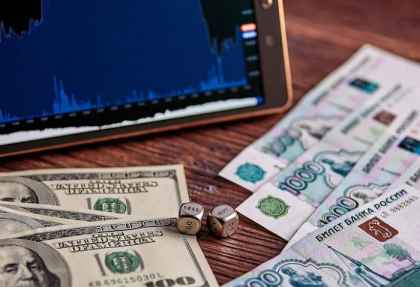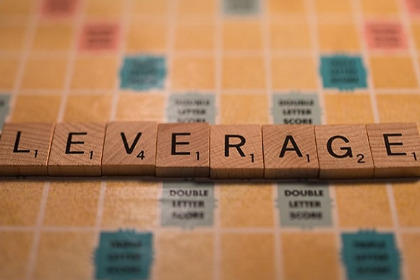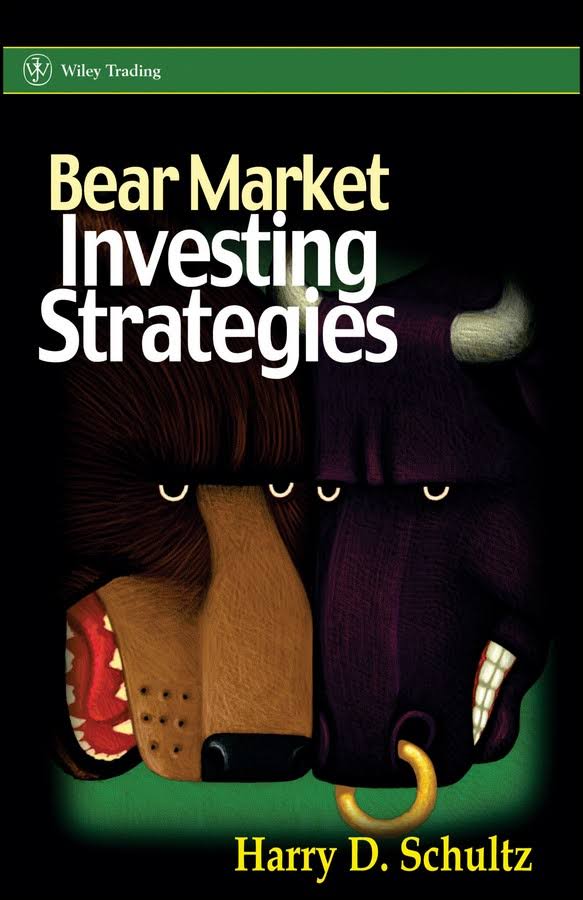Apart from trading strategy, trading size is also highly important because it directly impacts the risk of a trade. So, how do we determine the right trading size?
When you first enter the vast world of forex market, you'll find that forex trading is not just a walk in the park. One of the things that you should prioritize, apart from trading strategy, is your trading size or position size. Having a good trading strategy alone is not enough to generate considerable profit if your trade is too big or too small.

The size of your trade is closely related to the risk that you take. The bigger the position size, the greater the risk you must face. Thus, you need to be able to find a good balance between your trading strategy and your position in order to get the best possible outcome. In this guide, we'll explore the basic concept of position sizes in forex trading and how to use them to get maximum profit.
Contents
Understanding Lot in Forex Trading
A position size in forex trading is determined by the number of lots. The term "lot" in forex trading refers to a unit of measurement of the batch of currency that a trader controls.
The value of a lot is variable and it is usually set by exchange or broker so that they know how much of an asset that each trader controls when they open a position. Put it simply, think of it as a chocolate company that only sells its products in a box of 12 or 24. These are the standard sizes that they use, so customers wouldn't be able to buy the chocolates separately from the box.
The same concept also applies in forex trading. Lot is the "chocolate box" that consists of a specific number of currency units. Thus, traders must use lot units in their trades as determined by the broker.
Types of Lots in Forex Trading
Lots come in various sizes that are standardized and universally recognized. Typical standardization of lot sizes includes standard, mini, micro, and nano. The value of each lot depends on which type you're using. Here is the complete breakdown of each type:
1. Standard Lot
One standard lot in forex trading is equal to 100,000 currency units. If you use a dollar-based mini account and trade a dollar-based pair, then each pip in your trade would be worth $10. This is quite a big number for retail traders, so the risk is pretty high. This is why even though this type is the standard unit size in many brokers, it isn't the best option to start with if you're a beginner.
2. Mini Lot
Mini lots are 10 times smaller than standard lots. This means that one mini lot equals 10,000 currency units. This means that every pip movement is equal to $1. Keep in mind that even though $1 appears small in number, in forex trading, the price might move 100 pips a day or even less. If the market moves against you, then that simply means a $100 loss for a trade.
3. Micro Lot
Micro lots are 10 times smaller than mini lots. This means that one micro lot equals 1,000 currency units. If you use a dollar-based account and trade a dollar-based pair, then each pip in your trade would be equal to 10 cents. Due to the smaller size, the profit and loss effect of a micro lot is lower than the previous types, hence it is suitable for small or beginner traders.
4. Nano Lot
Nano lots are 10 times smaller than micro lots. This means that one nano lot is equal 100 currency units. If you use a dollar-based account and trade a dollar-based pair, then each pip in your trade would be equal to 1 cent. This is a very small number, so trading with nano lots is considered pretty low risk.
However, remember that low risk also means low potential profit. Thus, this type of lot is more appropriate for traders who want to focus more on learning and improving their skills instead of gaining profit. Note that not many brokers offer nano lots in their service because it is often considered not worth it for their business.
Why Position Size Matters
Trading lot size directly affects how vulnerable your trade is to market movements. For instance, a 100-pip move in a small trade wouldn't be as impactful as a 100-pip move in large trade. This is why it is important to the proper size of trade and calculate how much you want to risk in a single trade. A lot size that is too big will make the trade riskier and harder to control, but a lot size that is too small might not generate enough potential profit for your liking.
In a nutshell, finding a lot size that could balance potential profit and risk is a highly crucial trading decision. Essentially, you could determine the best position size for your trade manually based on your risk tolerance and trading objectives, then you could use risk management tools, such as a money management calculator to help you clarify your decisions.
Determining the Proper Lot Size in Forex Trading
As explained above, lots have various sizes. For this reason, in order to find the right system, you must be able to find the right lot size to balance trading opportunities and risks.
1. Choose Your Risk Limit per Trade
The first thing you need to do is to determine the amount of risk that you could afford per trade. The easiest way to do it is by setting a certain percentage or dollar amount limit that you will risk on each trade. For instance, if you have $10,000 in your balance and want to risk 1% of that amount, then you would risk $100 per trade. The exact percentage number is actually up to you, but most traders risk 1% of their account.
Having a good risk management system is crucial to your trade. Keep in mind that while other variables could change, you need to keep your risk limit constant. Don't risk 5% if you have a good feeling about the market and risk 1% in the next trade because the market seems unfavorable. The market can move in an unpredictable way, so choose the risk limit that is most suitable to you and stick to it. This limit should be the base guideline for every trading decision you make.
2. Plan Your Pip Risk on a Trade
Once you determine the maximum risk that you want in a trade, it is time to focus on the actual trade. So, calculate the pip risk on each trade, which is shown in the difference between the entry point and the point where you set your stop loss order.
For example, if you buy a EUR/USD pair at $1.3243 and set a stop loss at $1.3253, then you are risking 10 pips. The number of pips may vary depending on what strategy you use and the volatility of the asset, so pick the number that suits your trading style.
As a side note, it is worth noting that the purpose of a stop loss order is to help traders prevent the loss from a losing trade by automatically closing the trade if it passes a certain point. Therefore, determining where to place your stop loss is also important. You would want to place it as close as possible to your entry point, but also far enough so that it won't be triggered too early.
3. Calculate the Pip Value Based on the Lot Size
The next step is to calculate the pip value of a trade. In this case, you need to pay attention to the quote currency of your trade, or the second currency in the currency pair that you choose. If your quote currency is US dollar and your account is also funded with US dollars, the pip values for all types of lot sizes are fixed as follows:
- Standard lot: $10
- Mini lot: $1
- Micro lot: $0.10
- Nano lot: $0.010
However, if your account is funded with US dollars but the quote currency of the pair that you're trading is not US dollar, then you would have to multiply the pip values by the exchange rate of the dollar and the quote currency. Let's say you're trading EUR/GBP pair and the GBP/USD exchange rate is $1.2340. You can calculate the pips like this:
- Standard lot: $10 $1.2340 = $12.34
- Mini lot: $0.10 $1.2340 = $1.23
- Micro lot: $0.010 $1.2340 = $0.12
- Nano lot: $0.010 $1.2340 = $0.01
4. Determining the Position Size of the Trade
The last step is to determine the overall position size of the trade. Ideally, you can use the following formula:
Pips at Risk Pip Value Lots Traded (Position Size) = Amount at Risk
Let's say you have $10,000 in your balance and you choose to risk 1% of your trade. This means that your maximum risk limit is $100 per trade. Then, you decided to trade the EUR/USD. You end up buying at $1.3340 and placing the stop loss at $1.3350. This means that your pip value is 10 pips ($1.3350 – 13340 = $0.001). Since you're trading in mini lots, every pip movement is worth $1.
By using the formula, here's what you'll get.
10 $1 Lots traded = $100
Lots traded = 10
Now, that means the best position size for your trade is either 10 mini lots or 1 standard lot.
The Bottom Line
In forex trading, there's a list of things that a trader must check before opening a trade and putting their funds at risk. Determining position size is one of the most crucial parts because it can directly affect how much risk they must face per trade. Remember that the bigger the position size, the bigger the risk.
With that being said, as a trader, you need to make sure that the position size is big enough to generate significant profit, yet small enough to avoid losing too much money. Position sizing that fits your financial capability can be beneficial for your money management.

 Dedicated FREE FOREX VPS
Dedicated FREE FOREX VPS Free FOREX Virtual Private Server
Free FOREX Virtual Private Server MT4 Demo Contest, Get $500
MT4 Demo Contest, Get $500 Sign Up for an Account, Claim 60% Deposit Bonus
Sign Up for an Account, Claim 60% Deposit Bonus Free MT4/MT5 VPS 2024
Free MT4/MT5 VPS 2024 Send E-mail and Get Free Merchandise
Send E-mail and Get Free Merchandise $1K Refer a Friend Bonus for Pepperstone Pro clients
$1K Refer a Friend Bonus for Pepperstone Pro clients Maximize Your Earnings with 100% Deposit bonus
Maximize Your Earnings with 100% Deposit bonus Trade to Win, $5,000 Monthly Demo Contest
Trade to Win, $5,000 Monthly Demo Contest Claim 30% + 15% Deposit Bonus from LiteFinance
Claim 30% + 15% Deposit Bonus from LiteFinance








1 Comment
DJ
Sep 4 2022
Hey just wanted to look out for you real quick. If you buy EUR/USD @ 1.3243 and risk 10 Pips your stop loss is 1.3233 not 1.3253. If you sell at 1.3243 your stop loss would be 1.3253.